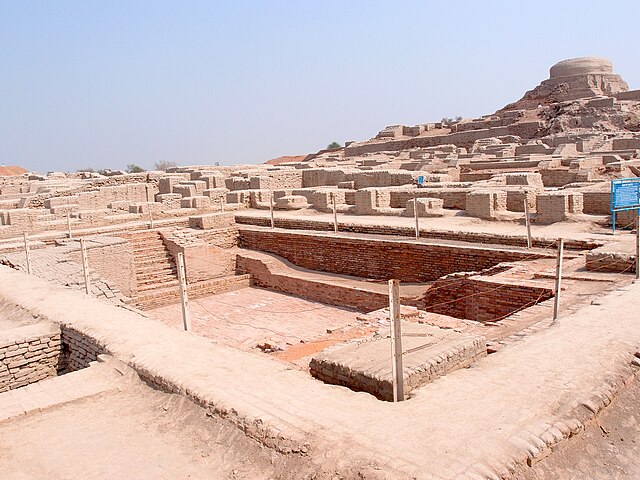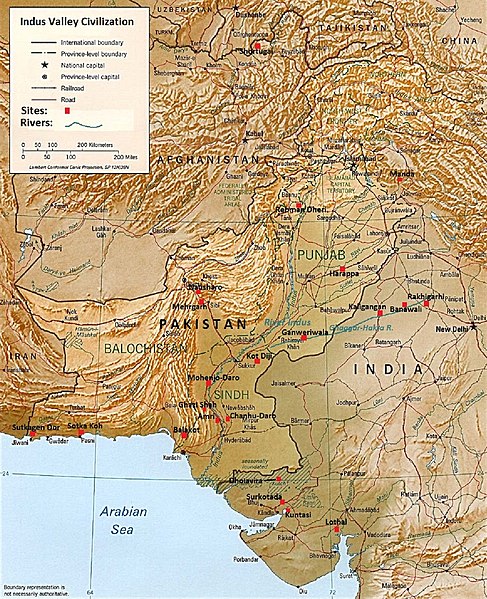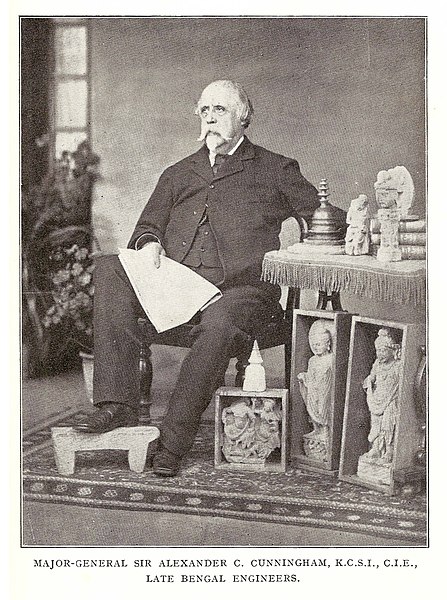The Great Bath is one of the best-known structures among the ruins of the Harappan Civilization, excavated at Mohenjo-daro in present-day Sindh province of Pakistan. Archaeological evidence indicates that the Great Bath was built in the third millennium BCE, soon after the raising of the "citadel" mound on which it is located.
The Great Bath was found in 1926 during archaeological excavations
During 1922-1927 archaeological excavations
Explanatory sign
General view
Indus Valley Civilisation
The Indus Valley Civilisation (IVC), also known as the Indus Civilisation, was a Bronze Age civilisation in the northwestern regions of South Asia, lasting from 3300 BCE to 1300 BCE, and in its mature form 2600 BCE to 1900 BCE. Together with ancient Egypt and Mesopotamia, it was one of three early civilisations of the Near East and South Asia, and of the three, the most widespread, its sites spanning an area from much of modern day Pakistan, to some parts of northwestern India and northeast Afghanistan. The civilisation flourished both in the alluvial plain of the Indus River, which flows through the length of Pakistan, and along a system of perennial monsoon-fed rivers that once coursed in the vicinity of the Ghaggar-Hakra, a seasonal river in northwest India and eastern Pakistan.

Excavated ruins of Mohenjo-daro, Sindh province, Pakistan, showing the Great Bath in the foreground. Mohenjo-daro, on the right bank of the Indus River, is a UNESCO World Heritage Site, the first site in South Asia to be so declared.
Miniature votive images or toy models from Harappa, c. 2500 BCE. Terracotta figurines indicate the yoking of zebu oxen for pulling a cart and the presence of the chicken, a domesticated jungle fowl.
Major sites and extent of the Indus Valley Civilisation
Alexander Cunningham, the first director general of the Archaeological Survey of India (ASI), interpreted a Harappan stamp seal in 1875.







